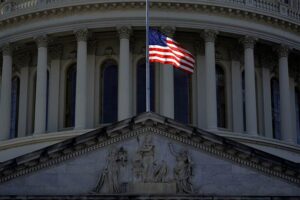The ongoing federal government shutdown could reduce US economic output by as much as $14 billion, according to an assessment by the Congressional Budget Office (CBO). The nonpartisan agency projected that the lapse in government funding could lower gross domestic product by up to 2% during the fourth quarter of the year.
As of October 29, the shutdown had stretched into its 29th day without resolution. Senate Republicans urged Democratic lawmakers to back a temporary funding bill to keep federal agencies running through November 21, while Democrats pushed for negotiations to extend expiring federal tax credits to help Americans obtain private health insurance under the Affordable Care Act.
The CBO indicated that the economy would be negatively affected by delays in federal spending on wages, contracts for goods and services, and food assistance programs for low-income households.
In a letter dated October 29 to House Budget Committee Chairman Jodey Arrington, the agency’s director, Phillip Swagel, stated that although much of the reduction in real GDP would eventually be recovered, a permanent loss of between $7 billion and $14 billion was expected. Swagel noted that the exact economic impact would depend on the administration’s decisions during the course of the shutdown.
Approximately 750,000 federal employees have been placed on furlough since funding expired on October 1, marking the beginning of the 2026 fiscal year. The Trump administration has authorized continued pay for US military personnel, federal law enforcement officers, and immigration staff, while other government workers have been required to continue their duties without pay.
According to the CBO’s projections, if the shutdown were to end this week, the economy would experience a permanent loss of about $7 billion. A continuation lasting six weeks, through November 12, could result in an $11 billion loss, and if it extends for eight weeks until November 26, the total economic cost could rise to $14 billion.













